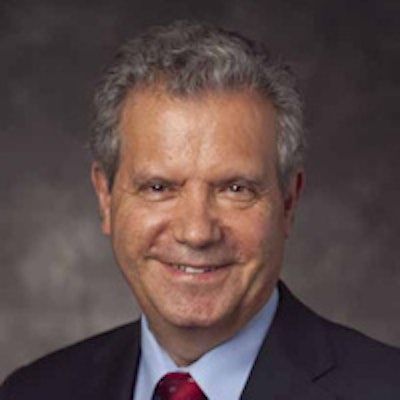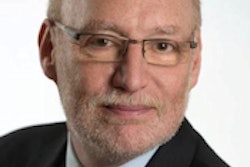
With the government shutdown behind us, implementation of the U.S. Patient Protection and Affordable Care Act (aka Obamacare) continues to proceed. Its effects will extend into academic radiology, which can adapt by focusing on value, not volume, according to a review published in the October Academic Radiology.
"The [Affordable Care Act (ACA)] is moving forward -- the train has left the station," contributing author Dr. Pablo Ros, PhD, from Case Western Reserve University, told AuntMinnie.com.
 Dr. Pablo Ros, PhD, from Case Western Reserve University.
Dr. Pablo Ros, PhD, from Case Western Reserve University.
Academic radiology departments have the potential to serve as gatekeepers of appropriate imaging, according to Ros and colleagues. But how will the law affect academic radiology's three main missions: clinical practice, research, and education? And what can radiologists working in academic centers do to adapt?
The changing face of clinical practice
With at least 30 million more Americans insured under ACA, academic radiology departments will need to prioritize, measure, and maintain improved service quality and patient satisfaction, the authors wrote (Acad Radiol, October 2013, Vol. 20:10, pp. 1213-1217).
They suggested that academic radiology departments should focus on five key areas:
- Appropriate utilization: Academic radiology departments can provide support to referring physicians for determining when imaging is appropriate.
- Radiation dose control: ACA will probably increase the volume of imaging orders, and radiologists will need to know which tests to use at the most efficient radiation dose.
- Reimbursement changes: Although the current fee-for-service model will continue in some form under ACA, new payment models such as bundled payments and pay for performance are gaining ground.
- Medical informatics: ACA will spark increased use of imaging informatics to track quality, safety, productivity, scheduling, billing, and feedback from patients and referring physicians.
- Accountable care organizations (ACOs): As ACA is implemented, these groups will play a key role in the effort to curb inappropriate imaging.
Reinventing research
The attitudes that academic radiology departments have toward imaging use must change, Ros and colleagues wrote. They'll need to alter their research priorities as well, focusing on "comparative effectiveness research" -- that is, research that compares the benefits and harms of particular strategies to prevent, diagnose, treat, and monitor various health conditions.
Information alone is not enough, according to the authors: Research must generate useful applications for the practice of medicine.
"The ACA will, in part, drive the research agenda for academic radiology departments in the future," they wrote.
Sources for research include the congressionally funded Patient-Centered Outcomes Research Institute, as well as the U.S. Centers for Medicare and Medicaid Services' Innovation Center, which plans to provide up to $1 billion in grants for new ideas to improve care while lowering costs.
"Ultimately, there is a need to demonstrate if imaging studies can possibly prevent higher downstream costs and improve patient outcomes," Ros and colleagues wrote.
Expanding education
ACA will force academic radiologists to develop and teach residents and fellows new ways of identifying appropriate and cost-effective tests, as well as how to perform and evaluate them; academic radiology departments should offer formal courses that introduce outcomes research concepts and evaluation methods, according to the authors. And radiologists in training need to know the best ways to deal with patients.
"Diagnostic and interventional radiologists will be required in the future to interact with patients in an advisory role," the team wrote. "For this purpose, it is of utmost importance to train radiology residents to better apply the principles of professionalism in this environment."
The more academic radiologists become aware of and understand healthcare reform, the better, Ros said.
"We have to adopt a new paradigm, and teach our residents to focus on value rather than volume," he told AuntMinnie.com.




















